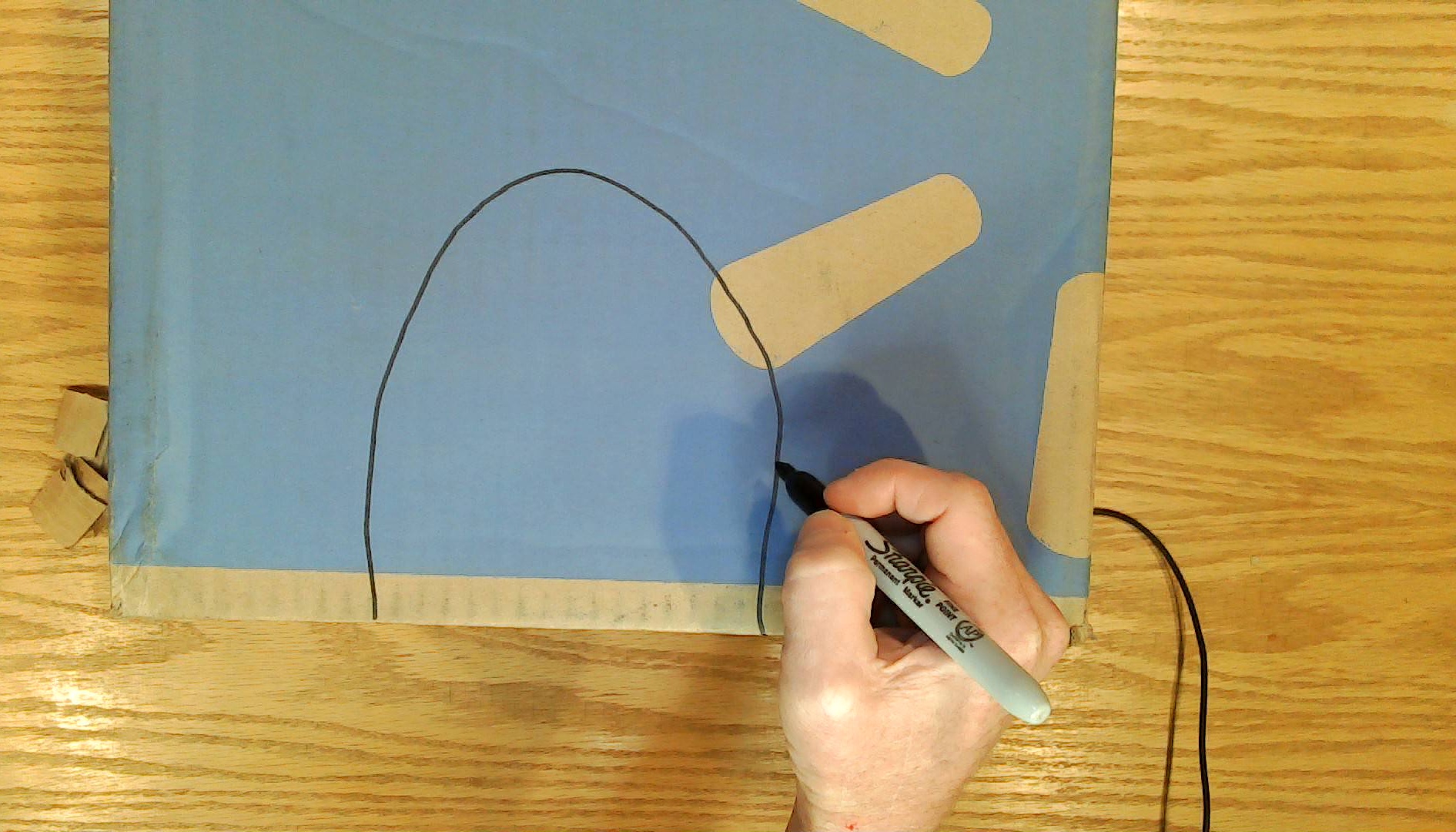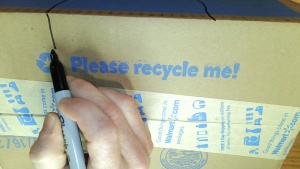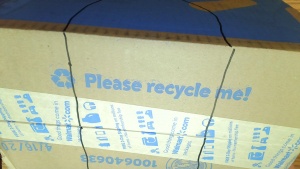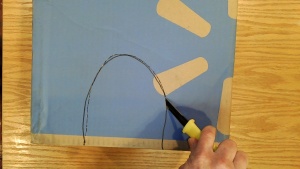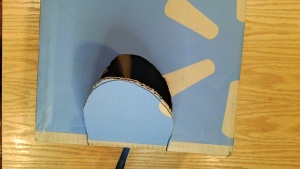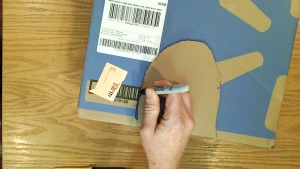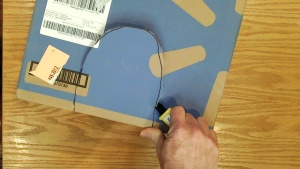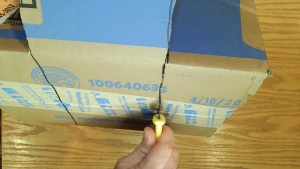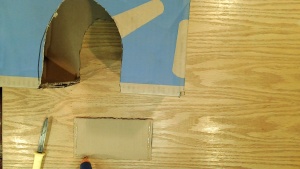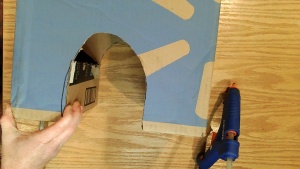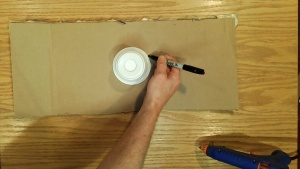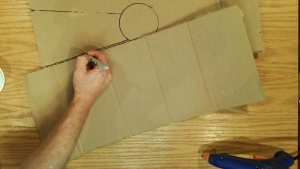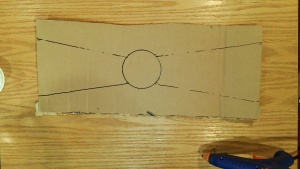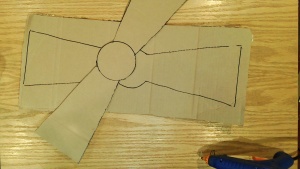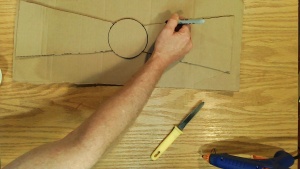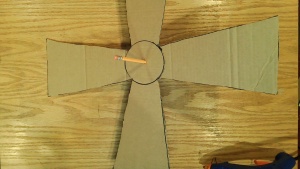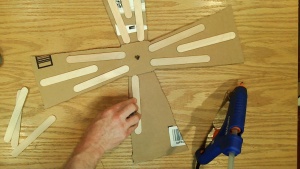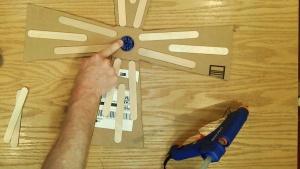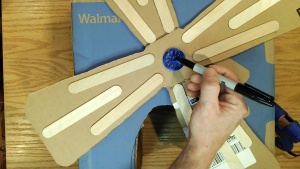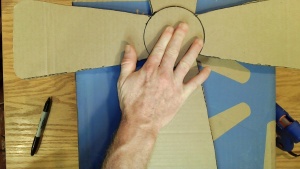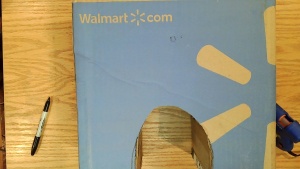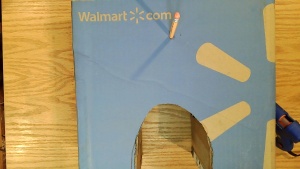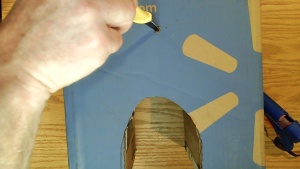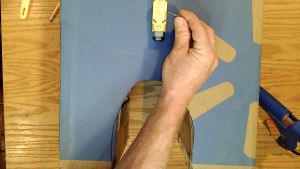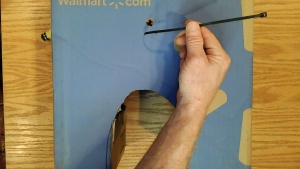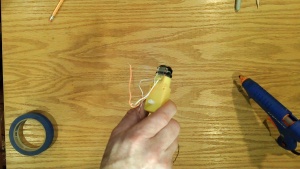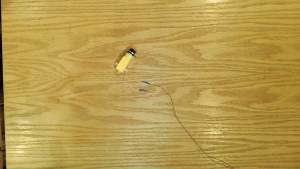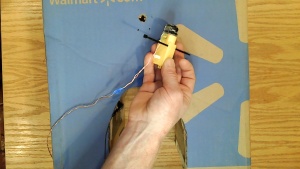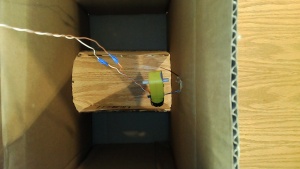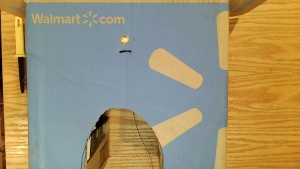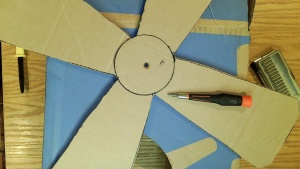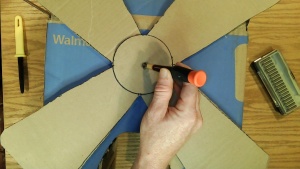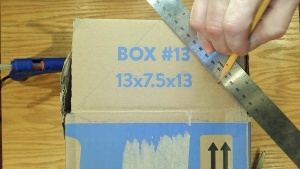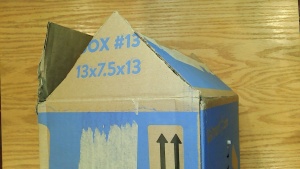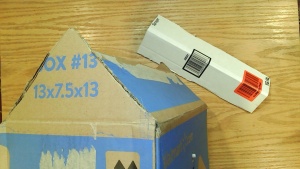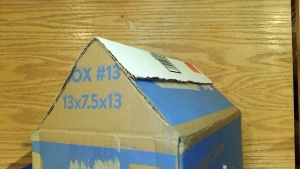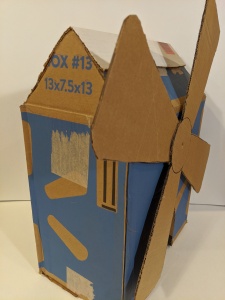Difficulty
Mechanical: Easy
Coding and Electrical: Basic
Construction: Medium
This traditional mini-golf structure adds impact and movement to your course.
If you like building and are new to electronics, this is your project. The windmill is a structure that converts wind energy into a rotational energy using blades or sails. The term windmill specifically refers to milling gain but the term can be extended to wind pumps and other turbine based systems.
The Body
The body can be as simple as a box with a tunnel. It also offers plenty of opportunity to add design and bling. In this example we make a quick body out of the existing box’s structure.
Draw straight lines on the bottom of the box from both edges of the tunnel hole to the other side of the box. This will mark the edges of bottom of the other side’s tunnel hole
Use the cut out from the first side as a stencil for the opposite side. Line the stencil up with the lines that you drew across the bottom. Mark the tunnel and cut it out
Make it a tunnel!
You now have a hole cut into your box. Add sides to the passage to turn the hole into a tunnel. It will also keep the ball from getting trapped in the box.
Making The Blades
We are going to use 4 fan blades. You could use 2, just make sure your blades cover the tunnel
Use a straight side of cardboard to mark the edges of your fan blades. I like to have 2 blades per hub. The blade length should be at least 1 inch taller than the height of your tunnel.
Use a straight side of cardboard to mark the edges of your fan blades. I like to have 2 blades per hub. The blade length should be at least 1 inch taller than the height of your tunnel.
Glue the hub to the center. Make sure to keep the glue off of the screw hole in the center of the hub.
Your done with the fan blades and ready to move on to final assembly 🙂
Wiring and Final Assembly
Wiring and final assembly are done all at once. You can chose to leave an access panel to get to your motor later.
Congratulations! You have built the windmill. But wait! It still needs to be customized and coded to make it come to life.
Code:


